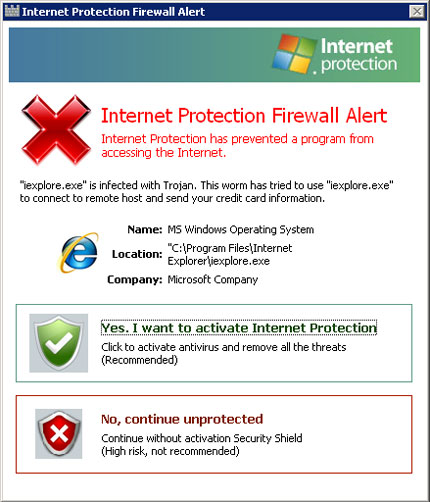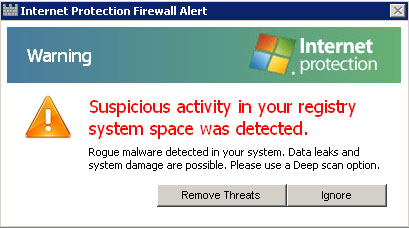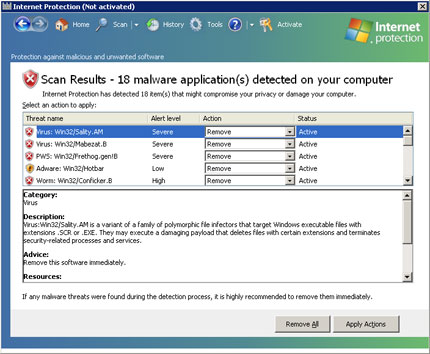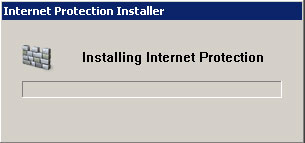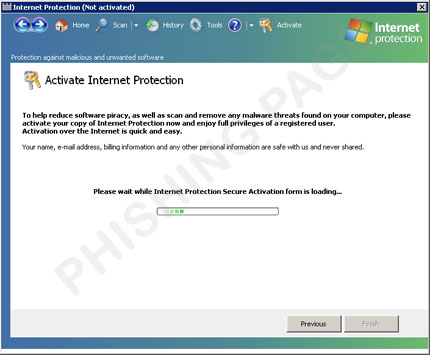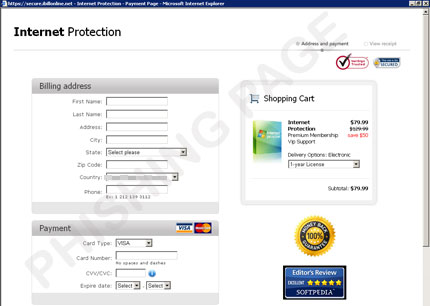TROJ_FAKEAV.BTV
Mal/FakeAV-KG (Sophos)
Windows 2000, Windows XP, Windows Server 2003


Threat Type: Trojan
Destructiveness: No
Encrypted: Yes
In the wild: Yes
OVERVIEW
This Trojan uses a .DLL file to perform all of their malicious routines to primarily avoid easy termination.
To get a one-glance comprehensive view of the behavior of this Trojan, refer to the Threat Diagram shown below.
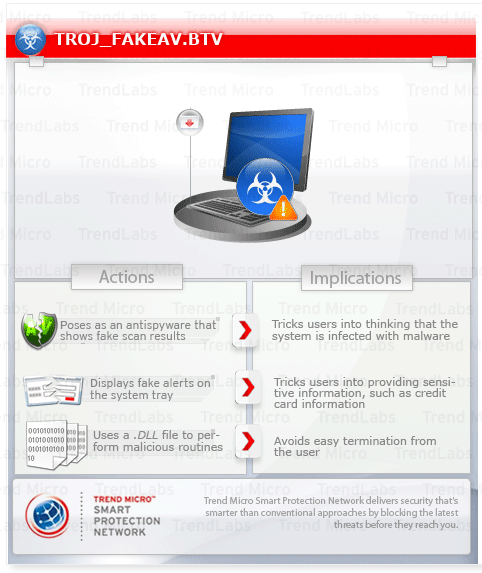
This Trojan displays fake alerts that warn users of system infection and attempt to convince them to reveal sensitive financial information.
This Trojan may be dropped by other malware.
TECHNICAL DETAILS
Arrival Details
This Trojan may be dropped by other malware.
Installation
This Trojan drops the following copies of itself into the affected system:
- %USer Temp%\wrk{random number}.tmp
Rogue Antivirus Routine
This Trojan displays the following fake alerts:
NOTES:
It displays fake alerts that warn users of infection. It also displays fake scanning results of the affected system. It then asks for users to purchase it once scanning is completed. If users decide to purchase the rogue product, users are directed to the following websites asking for sensitive information, such as credit card numbers:
- http://{BLOCKED}e.ce.ms/sw/l.php
- http://{BLOCKED}r.ce.ms/sw/l.php
It also reports installation information to the aforementioned sites.
Below are the screenshots of the fake activation GUI and the FAKEAV website:
It is usually dropped by its main malware as %Program Files%\Internet Protection\Internet Protection.dll.
SOLUTION
Step 1
Before doing any scans, Windows XP, Windows Vista, and Windows 7 users must disable System Restore to allow full scanning of their computers.
Step 2
Scan your computer with your Trend Micro product and note files detected as TROJ_FAKEAV.BTV
Step 3
Restart in Safe Mode
Step 4
Search and delete the file detected as TROJ_FAKEAV.BTV
Step 5
Restart in normal mode and scan your computer with your Trend Micro product for files detected as TROJ_FAKEAV.BTV. If the detected files have already been cleaned, deleted, or quarantined by your Trend Micro product, no further step is required. You may opt to simply delete the quarantined files. Please check this Knowledge Base page for more information.
Did this description help? Tell us how we did.


